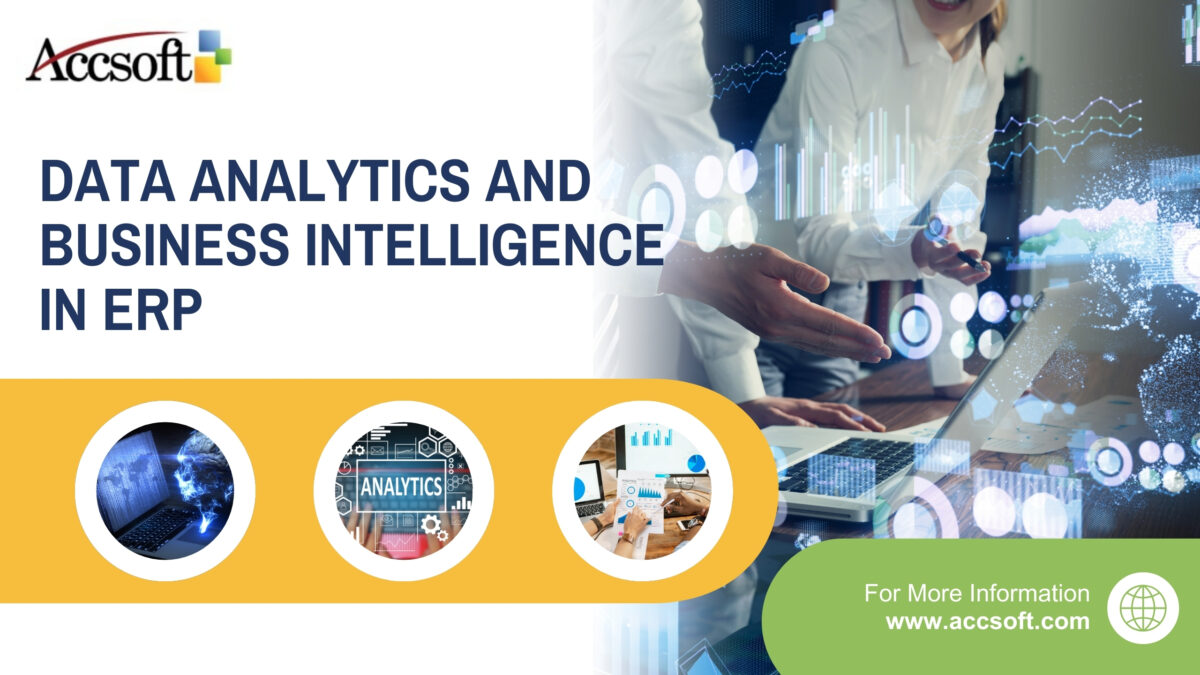
Data Analytics and Business Intelligence in ERP systems are more than managing businesses’ operations anymore. The emergence of Data Analytics and Business Intelligence has turned traditional ERP solutions into powerful tools offering insights for companies to make a data-driven choice.
The Role of Data Analytics in ERP
Data Analytics in ERP systems is the extracting, processing, and analysis of data created within different business functions. These include sales, finance, procurement, inventory, and human resources.
Advanced analytics can be applied for these purposes:
- Identify trends and patterns in business operations
- Optimize resource usage
- Serve customers better through predictive insights
- Operate with increased efficiency
- Minimize or avoid risks
With modern ERP systems like Microsoft Dynamics 365 Business Central, SAP S/4HANA, and Oracle NetSuite that include either built-in analytics or integration of BI tools, real-time data visualization and reporting can be expected.
Business Intelligence in ERP
BI develops upon the ERP system, providing dashboards, reports, and interactive visualizations that stakeholders can use to understand business performance at a glance.
Some significant features of BI in ERP include:
- Data Warehousing: Storing and organizing data from multiple sources for analysis.
- Real-Time Dashboards: Providing up-to-date metrics on sales, production, and financial performance.
- Predictive Analytics: Forecasting trends based on historical data.
- Custom Reporting: Enabling users to generate reports tailored to specific business needs.
- KPI Monitoring: Tracking performance indicators to measure business success.
Popular BI tools like Power BI, Tableau, and Qlik Sense integrate seamlessly with ERP solutions, making data analysis more intuitive and accessible.
Benefits of Data Analytics and BI in ERP
1. Better Decision Making
Real-time data access lets decision-makers avoid intuition and move toward more strategic planning.
2. Enhanced Operational Efficiency
Data analytics can uncover inefficiencies within workflows, leading to the cost-cutting efficiency of processes through optimization.
3. Improved Forecasting
Businesses can know what to expect in terms of market trends, demand fluctuations, and financial results through predictive analytics.
4. Increased Profitability
This is done by analyzing sales patterns and customer behavior to create better pricing strategies and increase profitability.
5. Regulatory Compliance
Automated reporting ensures businesses comply with industry regulations and standards and have accurate, audit-ready data.
The Future of Data Analytics and BI in ERP
With AI and ML being developed, ERP systems are going to become much more intelligent. Features like automated anomaly detection, insights from AI, and self-service BI tools are only going to increase the ability of the business to use data for competitive advantage.
The more data organizations continue to produce, the greater the demand will be for integrated analytics and BI within ERP. Those businesses that properly use these technologies will be in a stronger place to innovate, adapt, and successfully compete within the digital economy.







